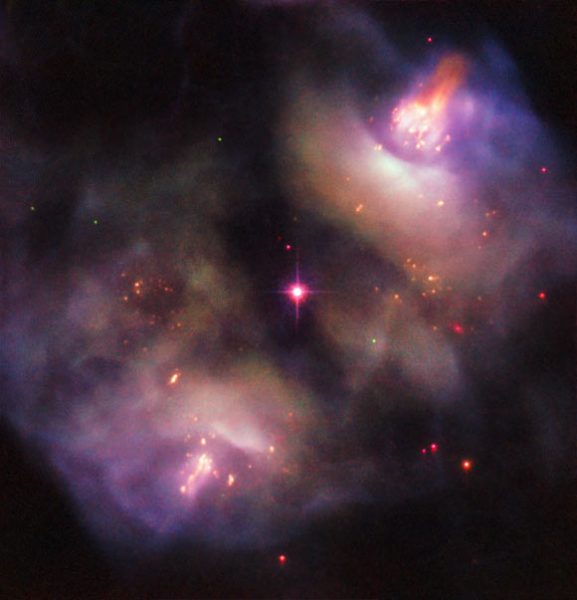Hubble Spots Bipolar Planetary Nebula | Astronomy – Sci-News.com
The NASA/ESA Hubble Space Telescope has delivered an unrivalled snapshot of the bipolar (two-lobed) planetary nebula NGC 2371/2.

This image shows the planetary nebula NGC 2371/2. The picture was snapped by Hubble’s Advanced Camera for Surveys (ACS) and Wide Field and Planetary Camera 2 (WFPC2). The color composite was assembled from images taken in visible and infrared light. Image credit: NASA / ESA / Hubble / R. Wade et al.
NGC 2371/2 is located approximately 4,300 light-years away in the constellation Gemini.
This nebula confused astronomers when it was first studied — rather than being classified as a single object, it was instead recorded as two objects, named NGC 2371 and NGC 2372, owing to its symmetrical lobed structure.
“NGC 2371/2 formed when a Sun-like star reached the end of its life and blasted off its outer layers, shedding the constituent material and pushing it out into space to leave just a superheated stellar remnant behind,” Hubble astronomers explained.
“This remnant is visible as the orange-tinted star at the center of the frame, sitting neatly between the two lobes.”
The remnant star is the super-hot core of the red giant. Its surface temperature is a scorching 240,000 degrees Fahrenheit (134,000 degrees Celsius).
“The structure of this region is complex,” the scientists said.
“It is filled with dense knots of gas, fast-moving jets that appear to be changing direction over time, and expanding clouds of material streaming outwards on diametrically opposite sides of the remnant star.”
“Patches of this scene glow brightly as the remnant star emits energetic radiation that excites the gas within these regions, causing it to light up.”
“This scene will continue to change over the next few thousand years; eventually the knotty lobes will dissipate completely, and the remnant star will cool and dim to form a white dwarf.”






